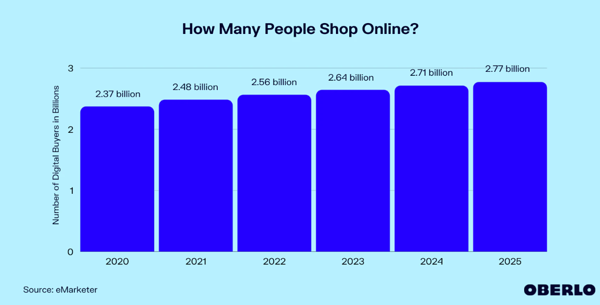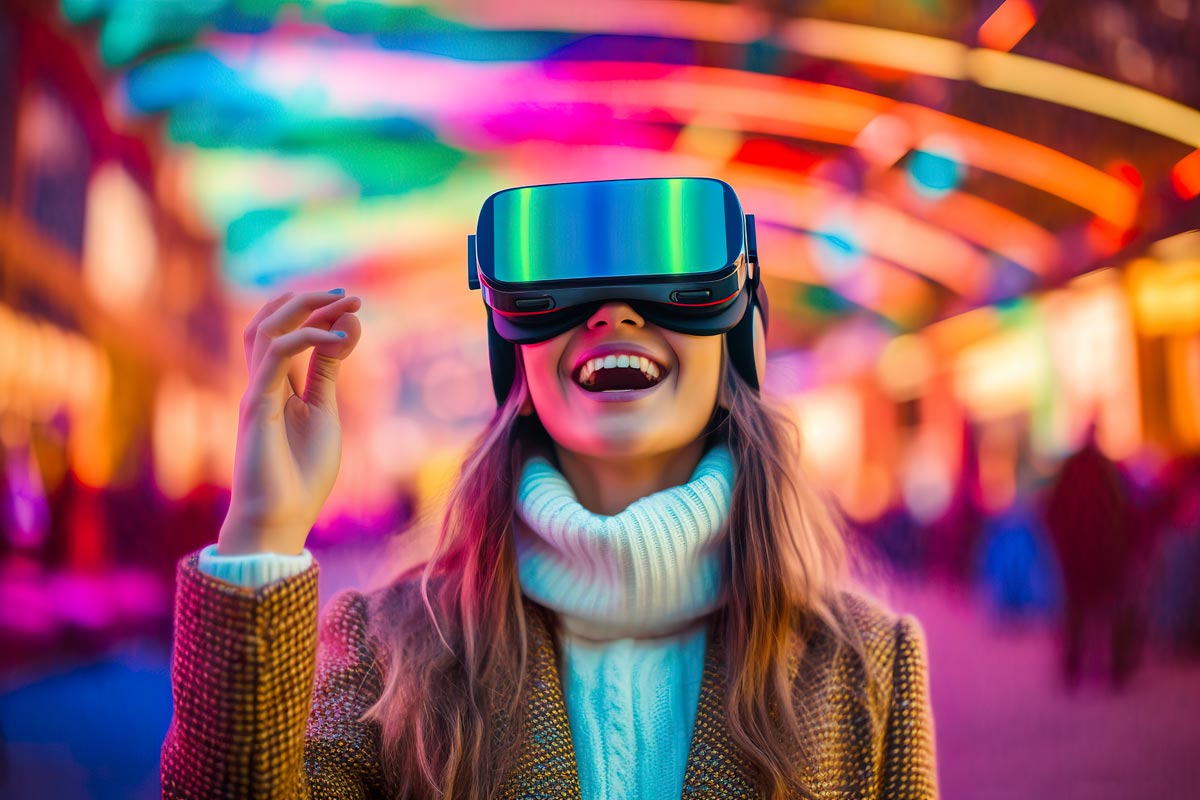You wake up and suddenly realize you traveled back to the early 1990s. It’s kind of weird, but you’re adventurous and love a good time-travel story, so you play along.
First, you need to blend in by getting a cool 90s outfit. You reach for your phone to browse clothes online, only to realize – there’s no such thing. Online shopping is yet to become an everyday thing.
That means only one thing – you must go out shopping the old-school way. That means:
- No reading online reviews before your purchase
- No product videos or photos for each product
- No personalization
- No AI e-commerce tools that act like a perfect shopping assistant
- No shopping experience that can be done in 30 seconds on your phone.
Sounds scary, but retail was very different some 20 years ago compared to now. And we expect to see a similar evolution in the near future of shopping.
A person coming back from the 2030s to today would feel the same shock you would feel if you had to go shopping in the early 90s.
Over the next 10 years, online shopping will become an even more immersive and convenient experience than it is today.
But before we see what the future of shopping holds in store for us, we must first get a wider picture.
How Retail Improved Over the Last 100 Years
Retail has come a long way over the past century.
From small local stores to huge shopping malls, and now to buying things with our phones in under 60 seconds. The evolution of retail has been extraordinary.
In the early 20th century, shopping had to be done manually and took a LONG time. It almost wasn’t fun at all.
Fast forward to the late 1900s, barcodes revolutionized the industry, speeding up checkout.
Then, the internet changed everything, opening doors for the digital retail landscape we know today.
When Was Online Shopping Invented?
Online shopping took its first steps in the 1990s.
Platforms like Amazon and eBay were born, setting the stage for a true retail revolution. These pioneers helped us move in the right direction and enabled us to find and buy the products we want in seconds. Not hours, days, or weeks.
The digital shopping experience was born. The industry transformed forever.
How has Shopping Changed in the Last Two Decades?
The rise of online marketplaces and mobile tech revolutionized how we find and buy products. Shopping is now quicker and more convenient than ever before. Everybody shops online.

Data analytics and personalization techniques now help retailers to offer tailored product recommendations, creating a more personalized and engaging shopping experience for consumers.
This led to a big rise in the e-commerce industry.
Global e-commerce sales worldwide are expected to top $7 trillion in 2025, twice as much as 2019. That’s a rapid growth.
The ecommerce numbers for 2030 go even higher.
And just like the internet changed the future of shopping back in the 90s, the same is happening now with AI-driven ecommerce tools, virtual/augmented reality interfaces, and similar technologies that will further transform how we buy stuff.
The Digital Retail Revolution and What the Future Has in Store
As the tech revolution is the main player in changing the future of shopping, modern retailers must take advantage of emerging technologies. These include visual AI tools, AI search, Augmented Reality (AR), and Virtual Reality (VR), which will give shoppers even more immersive experiences, allowing them to:
- Find exactly the product they need in seconds
- Virtually try on clothes, test out products
- Explore virtual showrooms
- Have dynamic pricing
- Enjoy hyper-personalization
Personalized Virtual Shopping Assistants – Everyone will have an AI-powered virtual shopping assistant who understands our preferences, style, and body measurements.
AR/VR Shopping Experiences & Fitting Rooms – AR will make shopping more immersive and revolutionize how we try on clothes and accessories online. You will be able to see yourself wearing that cool pair of pants and see if they actually fit you before you buy them.
Dynamic Pricing and Personalized Discounts – AI algorithms will be able to analyze customer behavior and real-time market trends to offer dynamic pricing and better personalization.
Visual AI Search – Wordless search and visual AI photo search will hugely improve the ease and speed of product discovery.
And what if I told you this last part is already available now?
Experience the Future of Shopping With Miros.ai
Miros is a visual AI search tool that ecommerce platforms use for smart merchandising. It can be easily implemented to improve shopping experience and increase sales.
This simple visual AI search tool improves and shortens the shopping journey, allowing customers to have a TikTok-like shopping experience and find the product they want in 30 to 60 seconds.
The customer simply inputs a single search, taps on the product image they like, and the visual AI then reads what’s in the picture and offers actually similar products, making sure you get relevant items in your search feed.
Here’s how it works:
With Miros.ai, you don’t have to wait for 2030 to embrace the future of shopping.
Book a demo now and see how quickly your ecommerce platform can boost KPIs. The shopping of tomorrow starts today.




